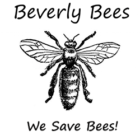A hive by any other name would smell as sweet.
As a brand new beekeeper, I’ve had a difficult first year. If it wasn’t for the support of my wonderful bee mentor, the bee master Stan, and my brand new bee buddies from bee school, I would not have made it this far with my hive. I am very grateful for all their help and advice. Thank you!
The bad luck started a few weeks after installation when my marked queen was superceded and killed off. Next, my bees decided they didn’t like their home anymore and swarmed away with their new queen. With great luck and determination, I caught the swarm and was able to rehive it. Unfortunately, the population of the swarm hive slowly dwindled. Many bees ended up returning to the original hive (why they swarmed in the first place only to return back home beats me). What was left was a very small population of bees in the swarm hive, one that was not strong enough to make it on their own.
The original hive has a larger population, but it’s still too small due to the death of my queen and lack of eggs for an extended period of time. I’ve been patiently waiting through many broodless weeks, for both queens (the one from the original hive and the one from the swarm hive) to start laying eggs. Finally, at last, three to four weeks later there are eggs and larvae in both hives. Woo Hoo!
Stan thought the best way to ramp up my bee population, and to get them to finish drawing out all the frames in the brood box, was to set up a two queen system. Yesterday he came over to help me merge my two hives together, making one hive containing two queens. Although he has never tried this with a package before, we are both hoping this new setup will save my bees and allow them to survive the harsh New England winter.
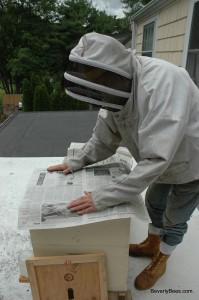
The first thing Stan did was remove the covers of the original hive and replace them with newspaper.
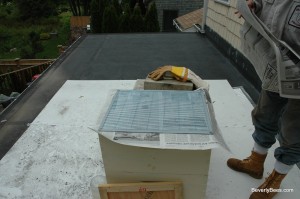
He then placed a queen excluder on top of the paper and used my hive tool to cut between 6 and 8 small slits in the paper.
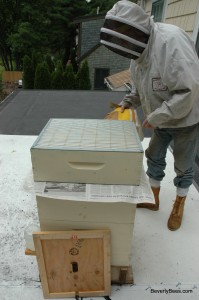
Next, on went the honey super filled with foundation. Another queen excluder was placed on top of that.
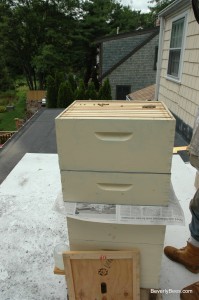
Lastly, the hive that swarmed was put on top, followed by the inner and outer covers.
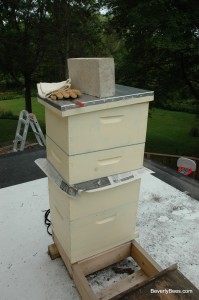
The idea is that the bees from both hives will eat through the newspaper over the next day or so. While this is happening, the pheromone smell of both queens will slowly permeate both hives. This mixed pheromone is the one the bees will adjust to, giving them allegiance not to one but two queens. The double queen excluders, with the honey super between them, keep the queens from being able to kill each other. This setup also keeps the queens laying eggs in their own separate areas of the hive. The worker bees will be able to pass through the excluders and the honey super entering both hives as they please.
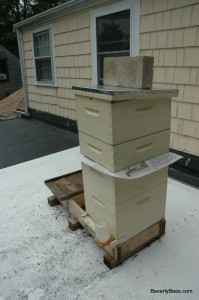
After the swarm hive was moved, the field bees were very confused and kept flying around in circles, landing on the bottom board where their hive used to be. With the pollen and nectar load they are carrying, they should easily be accepted back into the original hive.
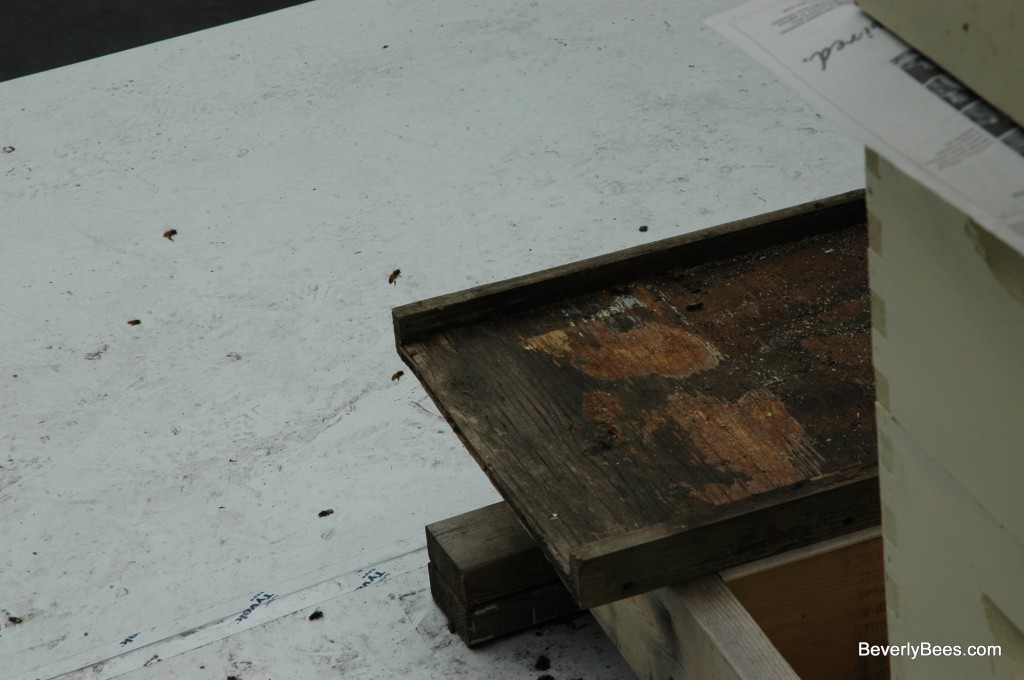
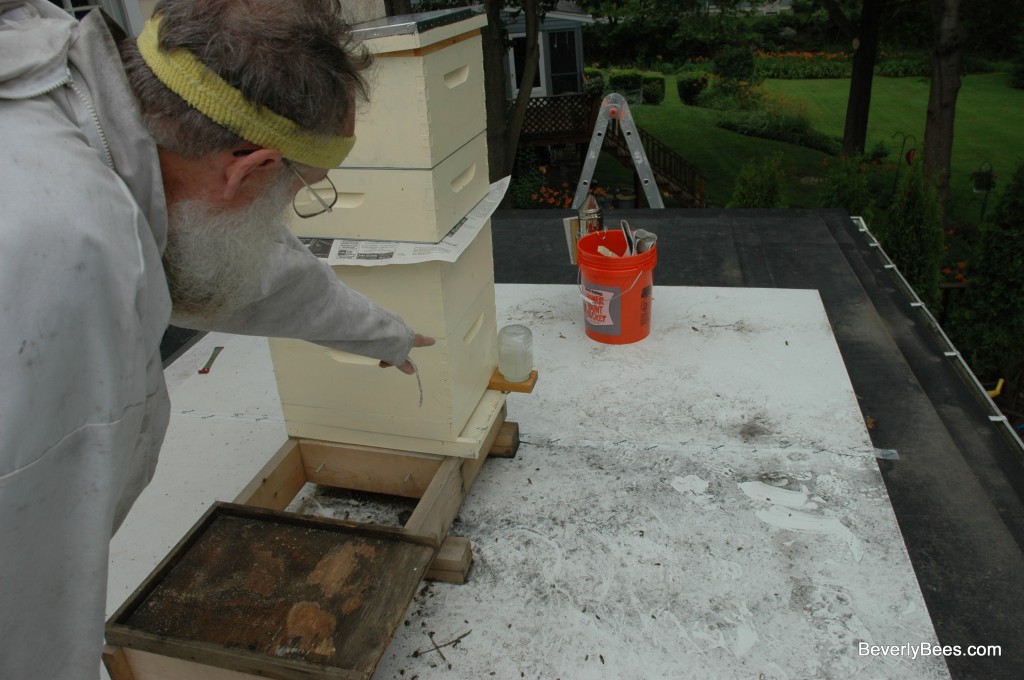
Stan and I watched the field bees from the swarm hive. After several minutes, a few of them tepidly tried to enter the original hive. The field bees belonging to the original hive would land confidently on the bottom board and enter right inside. But the field bees from the swarm hive would land far from the entrance and walk timidly into this new hive, turn around, fly back to where their old hive used to be, then try again to enter the new hive. By dusk there were no more bees flying around the bottom board of the swarm hive. I hope they all found a way inside.
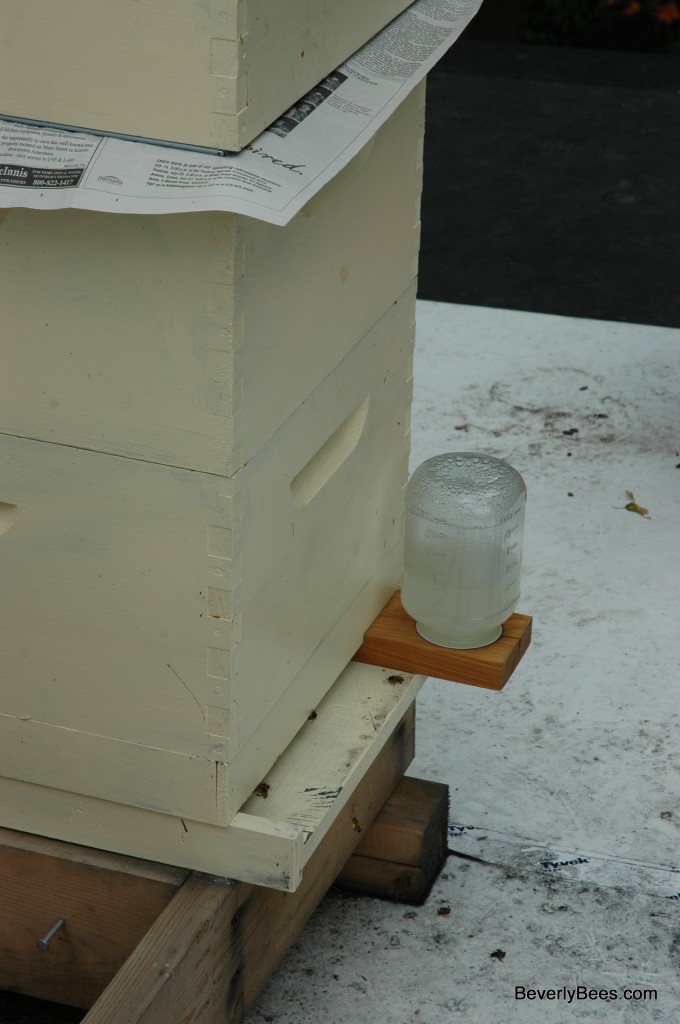
The bees should chew through the paper over the next day or two. In a few days the hive will be okay to check. Keep your fingers crossed for my bees!
